Interestingly, all but two South American countries border Brazil. Officially known as the Federative Republic of Brazil, this ‘soccer nation’ is all about unique experiences and attractions. These include the vibrant cities of Sao Paulo and Rio de Janeiro and natural wonders and sites like the Iguazu Falls, which are a UNESCO World Heritage site, and the iconic Christ the Redeemer statue. Like Brazil, its neighboring countries also have a lot of one-of-a-kind things to see and do. Here are the 10 countries that border Brazil.
1. Argentina

The Obelisco de Buenos Aires is a monument in Buenos Aires, the capital of Argentina.
©AdonisVillanueva/iStock via Getty Images
Bordering Brazil to the south, Argentina is a land of beauty. Its capital, Buenos Aires, is a bustling metropolis famously known for its colorful arts and music scene. Moreover, it is the birthplace of the Argentine tango. While in the country, explore the charming neighborhoods of San Telmo and La Boca or visit the iconic Plaza de Mayo, named after the May Revolution of 1810, which led to independence from the Spanish. On the border between Argentina and Brazil, the Iguazu Falls attract visitors from near and far. Nestled in a subtropical rainforest, Iguazu Falls is a UNESCO World Heritage Site and the largest waterfall network in the world. The most famous fall here is the U-shaped waterfall called Garganta del Diablo, at a height of 269 feet.
2. Uruguay

The Mausoleo a Artigas and Palacio Salvo in Montevideo are popular attractions in the capital of Uruguay.
©Leonid Andronov/iStock via Getty Images
To the south of Brazil lies Uruguay. Its capital, Montevideo, boasts a rich cultural heritage and a laid-back atmosphere. Stroll along Rambla of Montevideo, a 13-mile-long promenade along the coastline of Rio de la Plata. In addition to stunning views, Rambla of Montevideo is a popular spot for cycling, picnicking, and watching the sunset. The beaches of Punta del Este and La Barra are great spots for getting some rest and relaxation. Additionally, the historic Ciudad Vieja has many attractions worth exploring. These include the Solis Theatre, Torres García, and the Plaza Independencia with the Mausoleo a Artigas. The latter is the resting place of José Gervasio Artigas, who was a national hero and a central figure in Uruguay’s struggle for independence. Uruguay is known for its food, and popular culinary specialties are yerba mate tea and asado, which is a type of barbeque.
3. Paraguay

This historical Presidential Palace stands tall in Asuncion, the capital of Paraguay.
©Don Mammoser/Shutterstock.com
Sharing its border with Brazil to the southwest, Paraguay offers a unique blend of indigenous culture and colonial history. The historical Presidential Palace is in the heart of the capital, Asuncion. The city of Colonia del Sacramento is home to the UNESCO World Heritage Site, Barrio Historico of Colonia. In this charming area, remnants of 17th and 18th-century architectural facades dot the cobblestone streets. In addition, there are many preserved fortified walls and Portuguese and Spanish colonial-style plazas to explore, along with the historic Basílica del Santísimo Sacramento and Colonia del Sacramento Lighthouse from where you can get panoramic city views from the top. Other notable sites in Paraguay are the UNESCO World Heritage Sites of Jesuit Missions of Trinidad and Jesus.
4. Bolivia
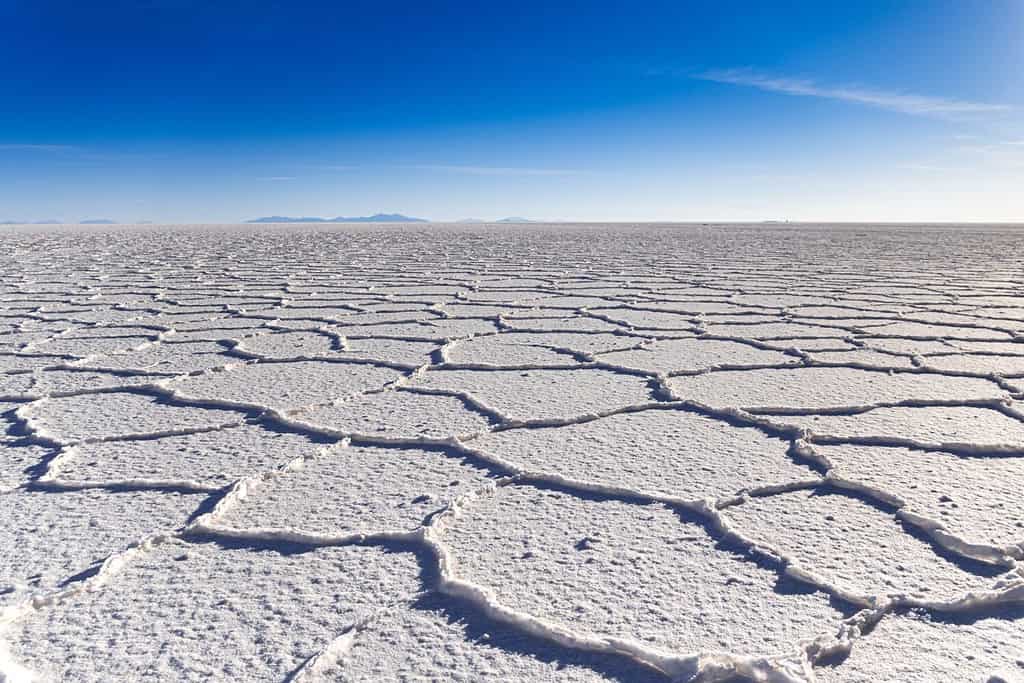
The largest salt flats in the world, Salar de Uyuni, are located in Bolivia.
©Marco A. Huanca/Shutterstock.com
To the west of Brazil lies Bolivia, with the distinction of having the highest capital city in the world, La Paz. Bolivia showcases a vibrant indigenous culture in its arts and crafts along with mesmerizing natural wonders, including the Salar de Uyuni, the largest salt flats in the world, and Lake Titicaca, one of the highest navigable lakes in the world. Bolivia is also home to a part of the Andes Mountains and the Madidi National Park, a protected area in the Bolivian Amazon rainforest. It is also famous for the ancient archaeological site, Tiwanaku, which was once the capital of the Tiwanaku civilization, and the city of Potosi, which was known for its silver mining during the Spanish colonial rule.
5. Peru

Machu Picchu in Peru is a UNESCO World Heritage Site.
©SCStock/iStock via Getty Images
Peru, bordering Brazil to the northwest, is a country steeped in ancient history. The capital, Lima, was founded in 1535, making it one of the oldest cities in the world. Moreover, the Historic Center of Lima is a UNESCO World Heritage with landmarks like the Plaza Mayor, the Lima Cathedral, and the Archbishop’s Palace. Undoubtedly, one of the major draws of Peru is the ruins of Machu Pichu. Built during the 15th century, it was once the capital of the Inca Empire. Situated at an altitude of around 7,970 feet above sea level, Machu Pichu is a range of temples, agricultural terraces, plazas, and residential buildings and also offers views of the scenic Huayna Picchu mountain. Peru is also home to the Nazca Lines, a series of geoglyphs etched into the desert floor dating from 500 B.C. to 500 A.D.
6. Colombia
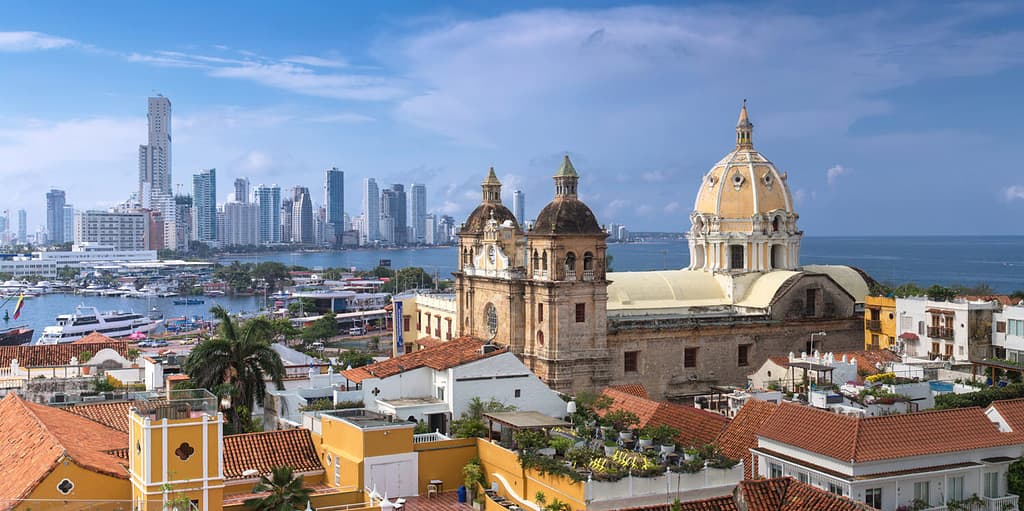
The skyline of Cartagena in Colombia is quite unique.
©sunsinger/Shutterstock.com
To the north of Brazil lies Colombia. The capital, Bogota, is a bustling metropolis nestled in the Andes Mountains. The colorful streets of Cartagena, a UNESCO World Heritage Site, have many treasures, including Old Town with its cobblestone streets, the imposing fortress, Castillo San Felipe de Barajas with its network of tunnels, and Cartagena Cathedral, all displays of colonial architecture. No trip to Colombia would be complete without sampling the coffee in the town of Salento. Moreover, for in-depth coffee education, the Coffee Cultural Landscape in the town of Armenia is a UNESCO World Heritage Site comprising coffee farms and traditional architecture. For some outdoor activities, the Cocora Valley provides great hiking trails among towering wax palm trees, Colombia’s national tree.
7. Venezuela
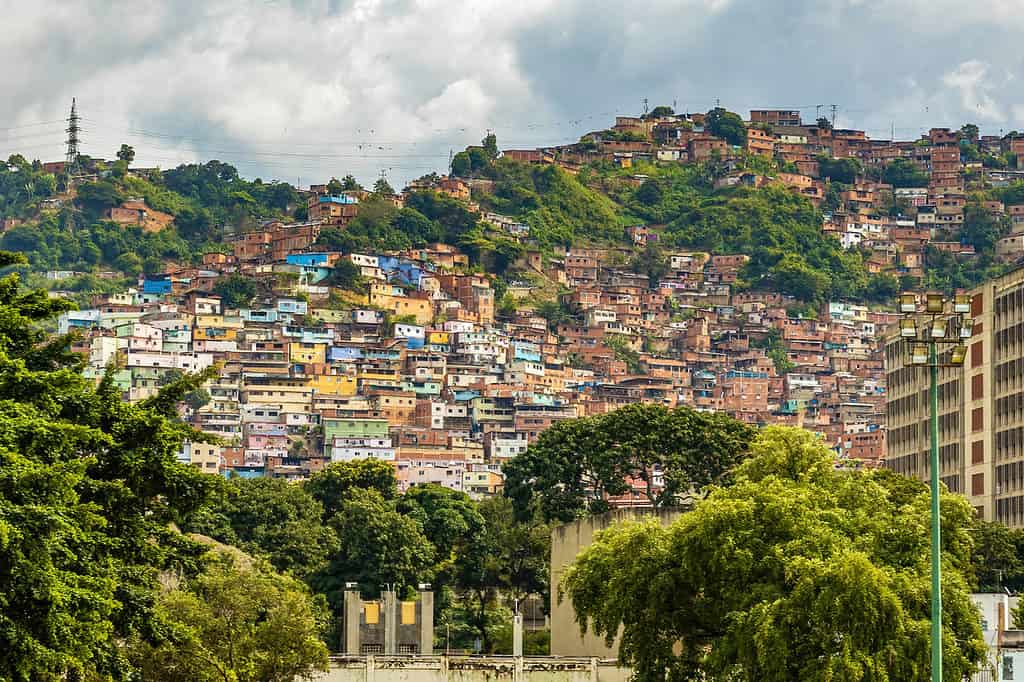
A cluster of residential rainbow-colored buildings cover Caracas, the capital of Venezuela.
©iStock.com/GummyBone
Venezuela borders Brazil to the north. Its capital, Caracas, has many landmarks, including the historic square of Plaza Bolivar, where the Caracas Cathedral, the Capitol, and the National Pantheon where the remains of Simon Bolivar are. The Museo de Bellas Artes is another must-visit, as well as El Ávila National Park, where you can take a cable car ride to the top of the Ávila Mountain for views of Caracas and the Caribbean Sea. Venezuela is home to Angel Falls, the highest waterfall in the world, located in Canaima National Park. Off the northeastern coast of Venezuela, head to Isla Margarita for some beachside fun.
8. Guyana
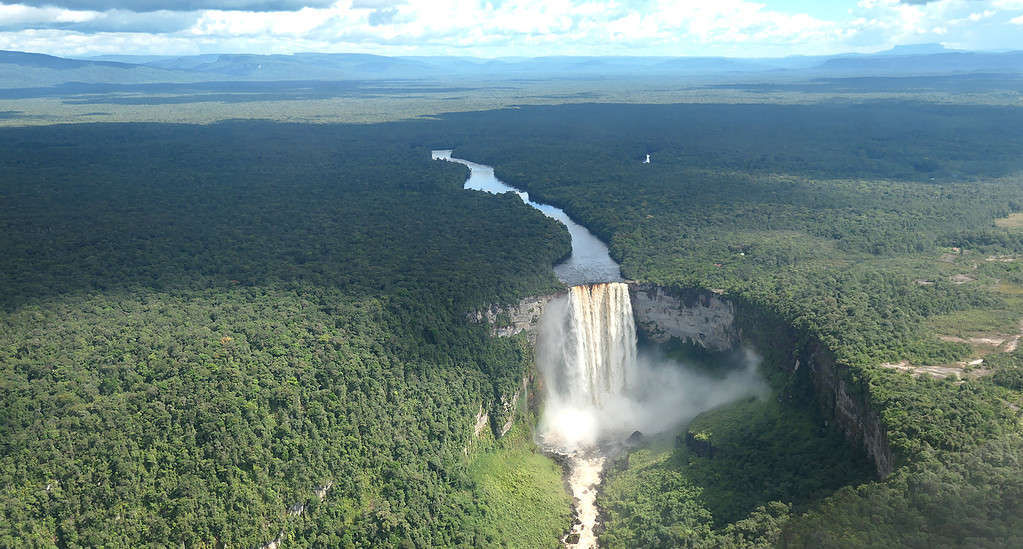
Kaieteur Falls in Guyana provides spectacular views.
©deeltijdgod/iStock via Getty Images
To the northeast of Brazil lies Guyana, a hidden gem of South America. Its capital, Georgetown, is a charming city with a unique blend of Caribbean and South American influences. While in Guyana, explore the rainforests of Kaieteur National Park with the majestic Kaieteur Falls. Moreover, discover the rich ecosystem of the Iwokrama Forest, spanning 1,435 square miles, the Rupununi Savannah, located on the border with Brazil and Venezuela. The savannah forest is home to diverse wildlife and birds.
9. Suriname
One of the smallest countries in South America, Suriname borders Brazil to the north. The capital, Paramaribo, is a UNESCO World Heritage Site. It is known for its local markets, historic sites, and Dutch colonial architecture. Explore the rainforests of Suriname at the Brownsberg Nature Park, which covers over 30,000 acres and is teeming with flora and fauna unique to the region. The park offers hiking trails and is a birdwatching paradise. Boating on the Suriname River is a great way to spot wildlife. With its diverse population, Suriname is famous for its cuisines that are influenced by Indian, Javanese, and Creole flavors.
10. French Guiana
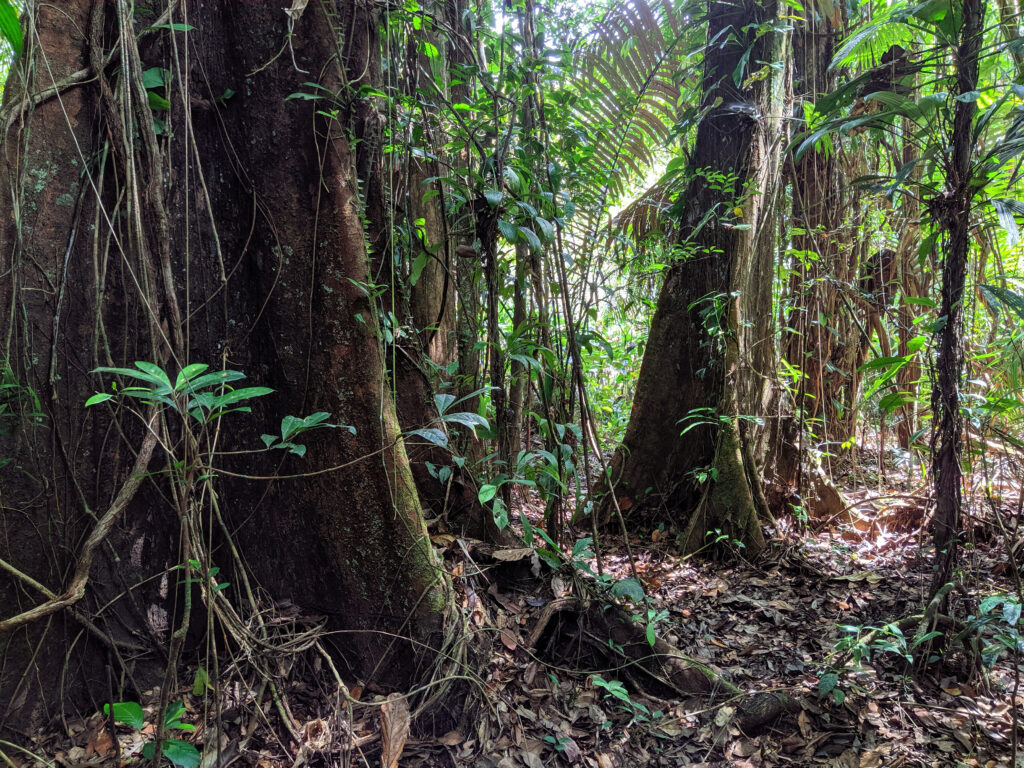
The Amazon Forest is in French Guiana.
©Petr Muckstein/Shutterstock.com
French Guiana, an overseas department of France, shares its border with Brazil to the east. The capital, Cayenne, is a unique blend of French and Creole cultures. The Iles du Salut Iles is a group of islands off the coast where you can find ruins of former prison buildings. The
Guiana Space Centre located near Kourou is where you can learn about the world of space exploration and operations of a space mission. French Guiana is famous for its cacao plantations, which you can visit to learn about the chocolate-making process and for chocolate tastings. The country is also part of the Amazon rainforest, where you can go on a guided hike.
The photo featured at the top of this post is © Brastock/Shutterstock.com
Thank you for reading! Have some feedback for us? Contact the AZ Animals editorial team.







